- Top Employee Onboarding Software
- Why Use Employee Onboarding Software?
- Key Features of Effective Onboarding Software
- How To Choose The Right Onboarding Software?
- Which is the Best Onboarding Software?
- Frequently Asked Questions (FAQs)
- What Is Upskill And Reskill?
- Difference Between Reskilling And Upskilling
- Upskilling for Workplace Advancement
- Reskilling for Career Transformation
- Crafting Successful Upskill and Reskill Strategies
- Upskill And Reskill Strategizing: Things to Keep in Mind
- Measuring the Impact of Skill Development Initiatives
- Frequently Asked Questions
- What’s a Skill Gap?
- Employee Skill Gap Analysis: Why Do We Need It?
- How To Conduct Employee Skill Gap Analysis?
- Addressing Skill Gaps Through Training and Hiring
- Utilizing Skills Gap Analysis for Strategic Planning
- Leveraging Employee Skill Gap Analysis: Things To Keep In Mind
- Frequently Asked Questions
- Transformative Role of AI in Talent Acquisition
- Impact of AI on Business Recruiting
- Overcoming Challenges in AI-Driven Talent Acquisition
- Starting with AI in Talent Acquisition
- Future Landscape of AI in Talent Acquisition
- Frequently Asked Questions
- HR In The Hot Seat - Challenges With Evolving Workforce
- Mastering Effective HR Management: Tips For Overcoming Challenges
- Summing Up
- The Future of HR: Key Trends for 2024
- Skill-Based Hiring
- Prioritizing Employee Experience, Engagement & Well-being
- AI-Empowered Workforce Evolution and Its Impact
- Taking Diversity, Equity, and Inclusion Beyond Mandates
- Hybrid and Remote Work
- Embracing the Gig Economy and Blended Workforce
- Transparent HR Practices
- Climate Change Adaptation in HR Practices
- Leveraging HR Analytics for Data-Driven Decisions
- Continuous Learning & Development to Improve Productivity
- The Office Buzz in 2024
- Bottom Line - HR Operating Model Needs A Shift
- Importance and Impact of Recognizing Employee Birthdays
- Professional Birthday Wishes for Employees (All Experience Levels)
- Personalized Birthday Wishes for Employees in Different Roles
- Fun Birthday Wishes for Employees (with Templates)
- Birthday Wishes for Remote Employees
- Heartfelt Birthday Wishes for Employees
- Belated Birthday Wishes for Employees
- Simple & Sweet Birthday Wishes for Employees
- Celebrating Employee Birthdays: Ideas and Traditions
- Tips and Ideas for Sending Birthday Wishes to Employees
- Closing Thoughts
- Frequently Asked Questions
- What Is An Employee Referral?
- Benefits of Implementing Employee Referral Programs
- Setting Up an Effective Employee Referral Program
- Employee Referral Email
- Employee Referral Scheme
- Overcoming Challenges of Employee Referrals
- Companies with Best Employee Referral Programs
- Employee Referral Programs: Best Practices
- Closing Thoughts
- Frequently Asked Questions (FAQs)
- Importance of Team Building Activities
- Types of Team Building Activities
- Outdoor Team Building Activities for Employees
- Indoor Team Building Activities for Employees
- Easy Team Building Activities for Remote Employees
- Team Building Activities For New Employees (Icebreakers)
- Fun Team Building Activities for Different Goals
- To Boost Communication and Collaboration
- To Reduce Stress Levels and Promote Well-being
- Aligning Team Purpose and Values with Strategic Activities
- Final Remarks
- Frequently Asked Questions
- Importance of Employee Appreciation Quotes
- Work Appreciation Quotes for Employees
- Employee Appreciation Quotes for Hard Work Recognition
- Employee Appreciation Quotes for Teamwork and Collaboration
- Appreciation Quotes for Celebrating Employee Anniversaries and Milestones
- Employee Appreciation Quotes for Strong Work Ethics
- Employee Appreciation Quotes for Project & Goal Completion
- Employee Appreciation Quotes for Quality of Work
- Employee Appreciation Quotes for Creativity and Innovation
- Appreciation Quotes for Managers
- Peer-to-Peer Employee Appreciation Quotes
- Appreciation Quotes for Employees Leaving the Company
- Employee Appreciation Quotes for Thoughtful Gestures
- Funny Employee Appreciation Quotes
- Short Employee Appreciation Quotes
- Employee Appreciation Quotes for Different Roles
- Employee Appreciation Quotes for Senior Leadership
- Creative Ways to Use Employee Appreciation Quotes
- Summary
- Frequently Asked Questions (FAQs)
- What is Employee Satisfaction?
- Importance of Employee Satisfaction
- Objectives of Employee Satisfaction
- Employee Satisfaction vs. Employee Engagement
- Key Reasons for Employee Dissatisfaction
- Strategies for Improving Employee Satisfaction
- Ways to Measure Employee Satisfaction
- Best Practices for High Employee Satisfaction
- Final Remarks
- Frequently Asked Questions (FAQs)
- How to Craft Effective Employee Appraisal Comments
- Key Areas to Focus in Performance Review
- Comments On Hard Work & Dedication
- Assessing Interpersonal Skills
- Evaluating the Ability to Collaborate & Work in Teams
- Gauging Punctuality
- Commenting on Communication Style
- Reviewing Time Management and Productivity
- Leadership in Performance Appraisals
- Assessing Creativity & Innovation
- Evaluating Problem-Solving Abilities
- Recognizing Flexibility and Dependability in Reviews
- Employee Appraisal Comments for Different Roles
- Summary
- Frequently Asked Questions (FAQs)
- Employee Grievance Meaning
- Importance of Employee Grievance Process
- Types of Workplace Grievances
- Reasons for Employee Grievances
- Employee Grievance Procedure
- Steps in the Employee Grievance Handling Process
- Employee Grievance Form Example
- Final Remarks
- Frequently Asked Questions (FAQs)
- What is Company Culture?
- Importance of Company Culture
- Types of Company Culture
- Factors Contributing to Organizational Culture
- Assessing & Developing Corporate Culture
- Company Culture - It’s not just Perks or Feels
- Good Company Culture Examples
- Developing Company Culture: Best Practices
- Closing Thoughts
- Frequently Asked Questions (FAQs)
- What is Employee Empowerment?
- Benefits of Empowering Employees
- Employee Empowerment vs. Micromanagement
- Strategies for Effective Employee Empowerment
- Role of Managers in Fostering Empowerment
- Organizational Structure Supporting Empowerment
- Overcoming Barriers to Employee Empowerment
- Frequently Asked Questions (FAQs)
- What is Employer Branding?
- Importance of Employer Branding Strategy
- How to Build an Employer Branding Strategy?
- Strategies for Building a Strong Employer Brand
- How to Measure and Boost Your Employer Branding Success?
- Examples of Strong Employer Brand Strategy
- Best Practices for an Effective Employer Branding Strategy
- Closing Thoughts
- Frequently Asked Questions (FAQs)
- What are Employee Wellness Programs?
- Importance of Employee Wellness Programs
- Examples of Employee Wellness Programs
- Real-Life Examples of Corporate Wellness Programs
- Strategies for Encouraging Participation
- Supporting Diverse Employee Needs
- Creating Comprehensive Wellness Programs
- Measuring the Impact on Business and Employees
- Closing Thoughts
- Frequently Asked Questions (FAQs)
- What is Talent Management?
- Developing a Winning Talent Management Strategy
- Models and Frameworks
- Tips for Framing Effective Talent Management Strategy
- Looking Ahead: Recent Trends in Talent Management
- Frequently Asked Questions
- Role of AI in HR: Addressing Common Challenges
- Artificial Intelligence in HR Processes
- AI Tools for HR Functions
- How to Adopt AI in HR?
- Addressing Challenges of AI in HR
- Ethical and Responsible AI Use
- The Future of AI in HR
- Closing Thoughts
- Frequently Asked Questions
- What is Performance Management?
- Elements of Effective Performance Management
- Performance Management Cycle
- Differentiating Performance Management
- Benefits of Performance Management With Examples
- Challenges faced in Performance Management and their Solutions
- Future Trends in Performance Management
- Frequently Asked Questions
- Changing Role of HRM
- Changing Role Of HR Manager
- Technology and the Changing Role of HRM
- The Rise of AI and Machine Learning in HR
- Mobile Technology's Impact on HR Practices
- The Significance of People Analytics in HR
- Navigating the Future of HR Technology
- Final Remarks
- Frequently Asked Questions
- Compensation Management Meaning
- Compensation Types
- Breaking Down The Compensation Management Process
- HR Software for Compensation Management
- Current Trends in Compensation Management
- Frequently Asked Questions
- Defining Flexible Work Arrangements
- Flexible Working: Advantages for Businesses
- Challenges of Flexible Work Arrangements
- Crafting Flexible Working Practices
- Types Of Flexible Work Arrangements
- Comparing Flexible Work Arrangements
- Real-Life Examples of Flexible Work Arrangements
- Final Remarks
- Frequently Asked Questions
- Conflict Resolution Meaning
- Conflict Origins
- Tried & Tested Conflict Resolution Strategies
- Methods of Conflict Management at Workplaces
- Conflict Resolution Strategies: Top Management Tips
- Summary
- Frequently Asked Questions
- Career Development Meaning
- Career Development Plan for Employees
- Career Development in HRM: Growth Ideas For Employees
- Issues in Career Development and Their Solutions
- Closing Thoughts
- Frequently Asked Questions
- Understanding Compensation
- Exploring Benefits
- Difference between Compensation and Benefits
- Compensation & Benefits Structure
- Final Remarks
- Frequently Asked Questions
- Defining Recruitment in HR Practices
- Exploring Talent Acquisition in HR
- Understanding Talent Acquisition vs Recruitment
- When to Recruit or Acquire Talent
- Talent Acquisition vs Recruitment: Responsibilities
- From Recruitment To Talent Acquisition
- Closing Thoughts
- Frequently Asked Questions
- Work Culture Meaning
- Types of Work Cultures
- Components of Culture
- Best Work Culture Examples Set By Top Companies
- Creating a Positive Work Culture
- Closing Thoughts
- Frequently Asked Questions
- Defining Learning vs Development
- Importance of Learning and Development
- L&D Activities for Employees
- Choosing the Right L&D Activities
- Crafting an Effective L&D Strategies
- Aligning L&D Strategy with Business Goals
- Designing Engaging Learning Journeys
- Learning and Development Process: KPIs
- ROI in Learning and Development
- Emerging Trends in L&D
- Closing Thoughts
- Frequently Asked Questions
- What Is Leadership Development?
- Key Skills for Leaders
- How To Develop Leadership Skills in Organizations?
- What Is A Leadership Development Program?
- How To Develop A Leadership Development Program?
- Example of A Leadership Development Plan
- Benefits of Leadership Development Training
- Frequently Asked Questions
- Defining Diversity Training
- Importance of Diversity Training
- What are the Types of Diversity?
- Types of Diversity Training Methods
- Diversity Training Activities
- Choosing A Diversity Training Program
- How to Implement Diversity Initiatives
- Best Diversity Training Programs (Real-Life Examples)
- Improving the Effectiveness of Diversity Training
- Tracking and Evaluating the Results of DE&I Training Efforts
- Essential Elements for Successful Diversity Training
- Closing Thoughts
- Frequently Asked Questions
- Defining Occupational Health & Safety
- Evolution of Workplace Health and Safety
- Identifying Common Workplace Hazards
- Global Impact on Occupational Health & Safety
- Managing Employee Health and Safety Risks
- Occupational Health and Safety Problems
- Future of Occupational Health and Safety
- Frequently Asked Questions
- Employee Orientation Defined
- Employee Onboarding Explained
- Orientation and Onboarding: Understanding the Difference
- Importance of Orientation and Onboarding
- Crafting Comprehensive Integration Strategies
- Quick Tips for Orientation and Onboarding
- Frequently Asked Questions
- What is HR Metrics?
- Importance of HR Metrics
- HR Metrics Examples in Recruitment
- HR Metrics Examples in Employee Retention
- HR Metrics Examples in Revenue
- Other Common HR Metrics
- Soft HR Metrics Example
- HR Metrics Formula
- Utilizing HR Metrics Effectively
- Future of HR Metrics
- Summary
- Frequently Asked Questions
- Defining Decision Making Process
- Key Concepts In Decision Making
- Decision Making & Problem Solving
- Tips For Improving Decision Making Skills
- Selected Practice Questions & Answers
- Conclusion
- Frequently Asked Questions (FAQs)
- A case(s) of miscommunication
- The devil is in the (resume) details
- One for the complaints!
- What is an Exit Interview?
- Benefits of Exit Interviews to an Organization
- How to Conduct Exit Interviews?
- Exit Interview: Sample Questions to Ask
- Overcoming Challenges of Exit Interviews
- Exit Interviews: Best Practices
- Closing Thoughts
- Frequently Asked Questions
- Technology in the Workplace
- Benefits of Tech Integration
- Technology in the Workplace: Key Functions
- How Technology Normalized Remote Work
- Workplace Technology: Top Tools and Software
- Steps for Effective Technology Implementation
- Overcoming Tech Implementation Challenges
- Ethical Considerations in Tech Use
- Keeping Pace with Tech Trends
- Closing Thoughts
- Frequently Asked Questions
- What is Ethical Leadership?
- Principles of Ethical Leadership
- Difference between Ethics and Integrity
- Importance of Ethical Leadership
- Ethical Leadership in Practice
- Overcoming Challenges
- Frequently Asked Questions
- Embracing Change Management
- Mastering People Analytics
- Enhancing Stakeholder Relationships
- Navigating Diversity, Equity & Inclusion
- Upholding Ethics and Data Privacy
- Developing Critical Thinking
- Advancing Negotiation Techniques
- Fostering Inter-departmental Collaboration
- Building Resilience in HR
- Frequently Asked Questions
- What is Mental Health?
- Benefits of a Mentally Healthy Workforce
- Prioritising Mental Health: Creating a Culture of Support
- Final Remarks
- Frequently Asked Questions
- Gen Z vs Millennials - What is the difference?
- Retain and Engage Gen Z Employees: Need and Strategies
- Strategies to Retain and Engage Gen Z Employees
- Rethinking Requirements
- Final Remarks
- Frequently Asked Questions
- Understanding Millennial Leadership Needs
- Key Leadership Skills for Millennials
- How To Develop Millennial Into Leaders
- Additional Strategies to Develop Leaders
- Learning Preferences of Millennials
- Benefits of Investing in Millennial Leaders
- Closing Thoughts
- Frequently Asked Questions
- Understanding Fluff
- Examples of Interview Fluff
- Identifying Interview Fluff
- Addressing Interview Fluff
- Seeing Through the Fluff
- Frequently Asked Questions
- What is the Gender Pay Gap?
- Is the Gender Pay Gap Real?
- Factors Affecting the Gender Pay Gap
- How Age Impacts Women’s Earnings
- The ‘Motherhood Penalty’
- Education's Role in Wage Differences
- Racial and Ethnic Disparities in Pay
- Closing the Gender Gap
- Frequently Asked Questions
- Top Weirdest Late-To-The-Office Excuses
- The Fine Art of Balancing Wit and Wisdom in HR
- Understanding Social Media Recruiting
- Crafting Your Social Media Recruitment Strategy
- Implementing Your Strategy Effectively
- Popular Platforms for Recruitment
- Navigating the Downsides of Social Media Recruiting
- Measuring Success and Adjusting Strategy
- Summary
- Frequently Asked Questions
- Who Is A High Potential (HIPO) Employee?
- Characteristics of A High Potential (HIPO) Employee
- High Potential Employee Identification
- Grooming High Potential Employees
- Why High Potential Employees Leave
- How Do You Retain High Potential Employees?
- High Potential Employee Development: Best Practices
- Closing Thoughts
- Frequently Asked Questions
- What is Digital Fluency?
- Why Digital Fluency Matters?
- Difference between Digital Literacy and Digital Fluency
- Key Components of Digital Fluency
- Achieving Digital Fluency
- Overcoming Challenges
- Future of Workforce Digital Fluency
- Frequently Asked Questions
- What is Loud Quitting?
- Pros and Cons of Loud Quitting
- Reasons Behind the Trend
- Analyzing the Impact
- How HR Can Navigate the Loud Quitting Uproar
- Preventive Strategies
- Closing Thoughts
- Frequently Asked Questions
- Defining Emotional Intelligence in HR
- Why Emotional Intelligence Matters for HR Leaders
- How To Build Emotional Intelligence in HR
- Integrating EQ into HR Practices
- Impact of EQ on Company Culture
- Emotional Intelligence in HR: Major Challenges
- Final Remarks
- Frequently Asked Questions
- Understanding Internal Job Posting
- Internal Job Posting: Pros and Cons
- The Internal Job Posting Process
- Writing Effective Ads for Internal Job Posting
- Strategies for Success of Internal Job Posting
- Summary
- Frequently Asked Questions
- Understanding Workplace Bias
- Common Types of Bias in HR
- Closing Thoughts
- Frequently Asked Questions
- What is a Dry Promotion?
- Dry Promotion: Pros and Cons for Companies
- Impact of Dry Promotion on Employee Retention
- Preventing Talent Loss After Dry Promotions
- Closing Thoughts
- Frequently Asked Questions
- What Is A Stay Interview?
- Importance Of Stay Interviews
- Benefits And Challenges Of Stay Interviews
- Planning And Conducting Stay Interviews
- Stay Interviews: 20 Sample Questions To Ask
- Best Practices For Effective Stay Interviews
- Summary
- Frequently Asked Questions
- Who Is A Boomerang Employee?
- Reasons For Returning
- Benefits Of Hiring Boomerang Employees
- Challenges Of Rehiring
- Interviewing Boomerang Candidates: Sample Questions
- Enhancing The Hiring Process
- Making Informed Decisions
- Final Remarks
- Frequently Asked Questions
- Talent Pipeline Meaning
- Significance of Talent Pipelines
- Advantages of a Talent Pipeline
- Building a Talent Pipeline
- Maintaining a Talent Pipeline
- Attracting Top Talent
- Implementing the Strategy
- Frequently Asked Questions
- What is Micromanagement?
- Recognizing Micromanagement
- Leadership versus Micromanagement
- Keeping Micromanagement in Check
- Beyond Micromanagement
- Summing Up
- Frequently Asked Questions
- Recognizing Signs Of A Bad Hire
- Understanding The Impact On Teams
- Dealing With A Bad Hire
- Preventing Future Bad Hires
- Closing Thoughts
- Frequently Asked Questions
- Defining Neurodiversity
- Importance of Neurodiversity in the Workplace
- Moving Towards Inclusive Environments
- Final Remarks
- Frequently Asked Questions
- Understanding the Generation Gap
- Multigenerational Workforce: Debunking Stereotypes
- Strategies for Bridging the Gap
- Benefits of a Multigenerational Workforce
- Final Remarks
- Frequently Asked Questions
- Defining Productivity Theatre: All Show, No Go
- 5 Key Drivers of Fake Productivity
- Solutions to Combat Productivity Theatre
- Summary
- Frequently Asked Questions
- Defining Grumpy Staying
- Why do Grumpy Stayers not Leave?
- Recognizing the Signs
- Exploring the Causes
- Understanding the Impact
- Addressing the Issue
- Taking Action: Addressing Grumpiness with Empathy
- After the Conversation
- When Grumpy Staying Continues
- Closing Thoughts
- Frequently Asked Questions
- The Rationale Behind Office Peacocking
- Impact on Company Culture
- Impact on Employees
- Case Studies: Examples of Office Peacocking
- The Downside: Potential Pitfalls of Office Peacocking
- Practical Tips for Implementing Office Peacocking
- Frequently Asked Questions
- 13 Common Mistakes Young Managers Make
- Strategies To Avoid Mistakes (Individual Growth)
- How Young Managers Can Boost Teamwork
- Learning From Errors
- Summary
- Frequently Asked Questions
- Understanding Great Regret - What causes the shift shock?
- Impact of Great Regret
- How can HR help make the situation better?
- Closing Thoughts
- Frequently Asked Questions
- Understanding the HR Budget
- Key Components of an HR Budget
- Preparing an HR Budget Step-by-Step
- Importance of HR Budgeting in Management
- Final Remarks
- Frequently Asked Questions
- What are Pre-Employment Assessments?
- Importance of Pre-Employment Testing
- Types of Pre-Employment Assessments
- 15 Tips for Creating Effective Pre-Employment Assessments
- Closing Thoughts
- Frequently Asked Questions
- Exploring the Productivity Paradox
- Understanding the Impact of Solow Paradox
- Productivity Paradox: Why it Matters for Recruiters & HRs
- Identifying Causes and Challenges
- Strategies for Enhancing Productivity
- AI & the Modern-Day Productivity Paradox
- Beyond Technology: Building a Productive Workforce
- Summary
- Frequently Asked Questions
- Understanding the Great Reshuffle 2.0
- Preparing Leaders for the Change
- HR’s Role in Handling Great Reshuffling 2.0
- The Way Ahead
- Frequently Asked Questions
- Definition Of Managerial Grid
- Managerial Grid Theory Explained
- Application Of Managerial Grid
- Criticisms And Limitations
- Evolution And Contemporary Perspectives
- Integrating Managerial Grid With Other Models
- Practical Steps For Implementing Managerial Grid
- Conclusion
- Frequently Asked Questions
- Understanding Skills Taxonomy
- Why do we Need Skills Taxonomy?
- Benefits of Skills Taxonomy
- Components of Skills Taxonomy
- Building a Skills Taxonomy: A Step-by-Step Guide
- Skill Taxonomies vs Intelligence Tools
- Closing Thoughts
- Frequently Asked Questions
- Definition Of Team Building
- Stages Of Team Development
- Top 10 Strategies For Effective Team Building
- Team Building Activities
- Best Practices For Effective Team Building
- Setting Team Building Objectives
- Challenges In Team Building
- Conclusion
- Frequently Asked Questions (FAQs)
- Defining Job Shadowing
- Unpacking the Benefits
- Setting Up the Experience
- Job Shadowing vs Internship
- Dos and Don'ts for HR Professionals
- Closing Thoughts
- Frequently Asked Questions
- Employee Journey Mapping: Meaning & Importance
- Stages of the Employee Journey
- Steps for Effective Mapping
- Employee Journey Map: Where does it begin?
- Employee Journey Map: Template
- Best Practices & Tips
- Summary
- Frequently Asked Questions
- Why are Performance Appraisals needed?
- Evolution of Performance Management
- Modern Performance Practices
- Benefits of Modern Performance Appraisals
- The Future
- Frequently Asked Questions
- Is Experience the Sole Indicator of Success?
- Why Hire Inexperienced Talent?: Key Advantages
- Skills to Look For in Inexperienced Talent
- Challenges and Considerations in Hiring Inexperienced Talent
- Final Remarks
- Frequently Asked Questions
- What is a Company Retreat?
- Company Retreat Ideas: Team-Building & Exploration
- Relaxation and Celebration
- Planning Your Retreat: Things to Keep in Mind
- Closing Thoughts
- Frequently Asked Questions
- Understanding HR Forecasting
- HR Forecasting Key Concepts
- Steps for Implementing HR Forecasting
- Common HR Forecasting Methods
- Closing Thoughts
- Frequently Asked Questions
- What is ESG?
- HR and ESG - Why Care?
- ESG in HR Strategy
- Challenges for HR
- Future of ESG in HR
- Frequently Asked Questions
- Defining the Great Betrayal
- Reasons for Its Spread
- Impact on Workers
- Impact on Corporations
- Rebuilding Trust & Valuing Employees
- Closing Thoughts
- Frequently Asked Questions
- Importance of Clear Expectations
- Setting Expectations Early
- Communicating Expectations Effectively
- Differentiating Expectations
- Reviewing and Adjusting Expectations
- Summing Up
- Frequently Asked Questions
- Understanding KRA Frameworks And Models
- KRAs vs KPAs and KPIs
- Monitoring and Tracking KRAs
- KRAs in Various Roles
- Impact of KRA Frameworks and Models on Organizational Success
- Frequently Asked Questions
- Where: The Place of Work
- When: The Time of Work
- How Much Work: Alternate Employment Models
- Who Does the Work: Intelligence
- Designing Organizations with the Four Dimensions of Work
- Summing Up
- Simplifying Processes: The Foundation of Efficiency
- Reducing Unnecessary Meetings: Reclaiming Valuable Time
- Building Strong Accountabilities: Ensuring Responsibility
- Role of HR in Addressing Inefficiencies
- Continuous Improvement: A Commitment to Excellence
- Leadership's Role in Driving Efficiency
- Conclusion: A Holistic Approach to Efficiency
- Understanding Financial Freedom
- Benefits of Empowering Employees Financially
- Empowering Employees Through Financial Literacy
- Financial Topics That Need Attention Based On Career Stage
- Summing Up
- Frequently Asked Questions
- Defining Employee Voice
- Benefits of Amplifying Employee Voice
- Strategies and Tools
- Encouraging Participation
- Closing Thoughts
- Frequently Asked Questions
- Appraisal Blues: Signs of Unhappy Employees
- Addressing Unhappiness Post-Appraisal
- Non-Monetary Solutions for Dissatisfied Employees
- Summing Up
- Frequently Asked Questions
- Women in the Middle Eastern Workforce
- Importance of DEIB
- Role of HR in Building Inclusive Workplaces for Women
- Measuring Inclusion Progress: Key Metrics
- Closing Thoughts
- Frequently Asked Questions
- Preparing for the Conversation
- Conducting the Conversation
- Best Practices for the Talk
- After the Conversation
- Helping Employees Grow
- Frequently Asked Questions
- Understanding HR Exhaustion
- Factors Leading To HR burnout
- Impact Of HR Burnout
- Strategies To Prevent And Manage HR Burnout
- Role Of Technology In Preventing Burnout
- Celebrating HR Successes
- Summary
- Frequently Asked Questions
- Common Mistakes When Hiring Young Talent
- Building Connections with Candidates
- Summary
- Frequently Asked Questions
- Walking a mile in the employee’s shoes
- Conducting Humane Layoffs
- Remote Layoffs Management
- Supporting Laid-off Workers
- Managing the Aftermath
- Wrapping Up
- Frequently Asked Questions
- Importance of Shortening Time-to-Hire
- Shortening Hiring Time: Pre-Application Stage
- Reducing Hiring Time: Application Stage
- Hacks to Shorten Hiring Time: Interview Stage
- Reducing Hiring Time: Offer Stage
- 5 Other Important Hacks & Strategies
- Final Remarks
- Frequently Asked Questions
Leadership Development Is A Must For Every Organization. Here's Why
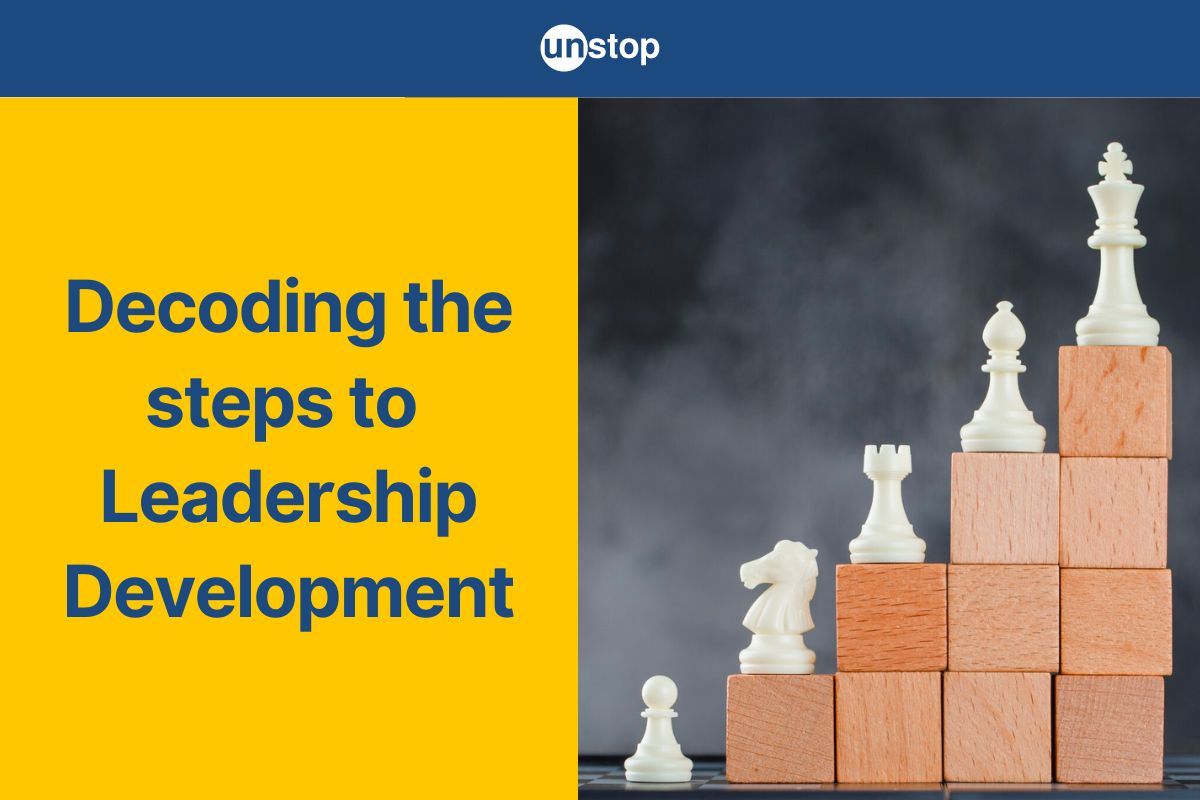
In the realm of leadership development, the line between success and mediocrity is drawn by the ability to adapt and grow. While some leaders falter under pressure, others thrive in challenging environments, honing their skills to lead with confidence and foresight.
Embracing change and seeking continuous improvement are key pillars in cultivating effective leadership qualities that stand the test of time. Leadership development enables companies to enhance their employees’ leadership abilities and elevate the impact of leaders on their teams.
What Is Leadership Development?
Leadership development focuses on nurturing and enhancing the skills and qualities of individuals to become effective leaders. It involves training, mentoring, and coaching to develop leadership abilities.
While leadership refers to the ability to lead others, leadership development is the process of intentionally improving those leadership skills. It goes beyond natural talent and encompasses continuous learning and growth.
Importance of Leadership Development
Organizations benefit from leadership development as it fosters a strong leadership pipeline, ensures continuity in leadership roles, and boosts employee engagement. Effective leadership development programs contribute to increased productivity and innovation within companies.
Leaders who prioritize communication, recognition, and professional growth create a positive work environment where employees thrive and feel motivated to perform at their best.
Key Skills for Leaders
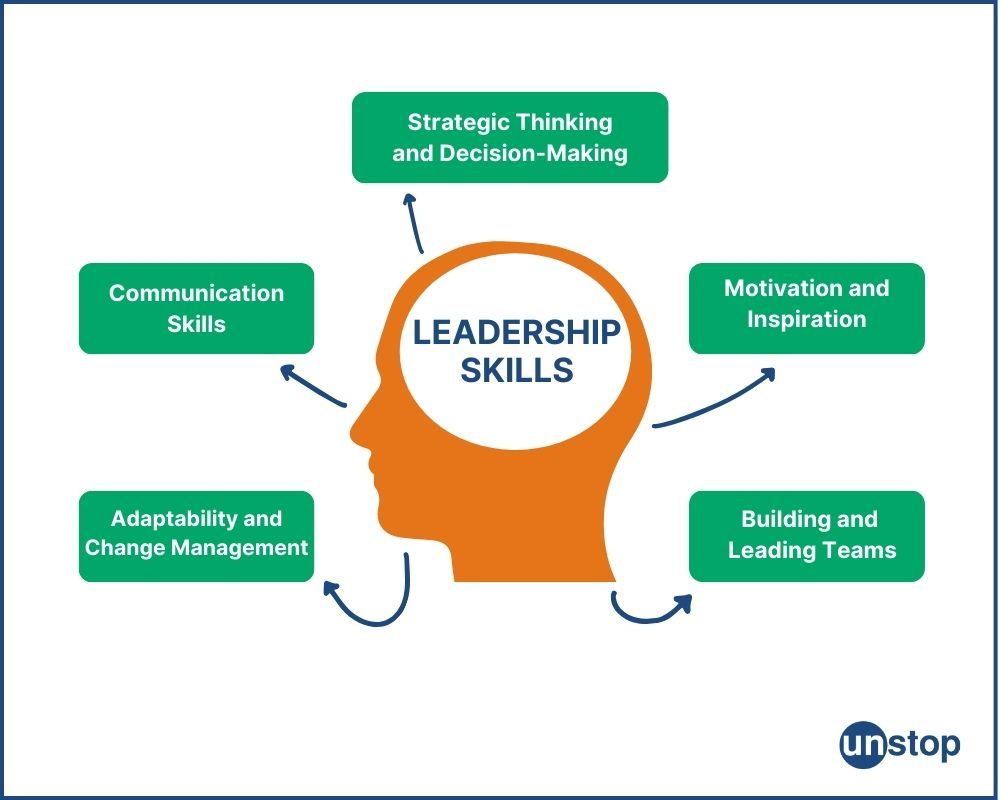
Effective leaders possess a range of skills that empower them to guide, motivate, and inspire their teams towards achieving goals. Here are some of the most important leadership skills:
Communication Skills
- Clarity and Concision: Leaders need to clearly communicate ideas, goals, and expectations to their teams.
- Active Listening: They should be attentive listeners, understanding their team members' needs, concerns, and perspectives.
- Transparency and Honesty: Building trust requires open and honest communication, fostering a healthy team environment.
Strategic Thinking and Decision-Making
- Vision and Goal Setting: Leaders establish a clear vision for the team and set achievable goals to guide their efforts.
- Problem-solving and Critical Thinking: They can analyze complex situations, identify solutions, and make sound decisions under pressure.
- Strategic Planning: Effective leaders can plan for the future, anticipating challenges and opportunities.
Motivation and Inspiration
- Enthusiasm and Positivity: Leaders who are passionate about their work can motivate and inspire team members.
- Empowerment and Delegation: They empower team members by trusting them with ownership and delegating tasks effectively.
- Recognition and Appreciation: Leaders acknowledge and appreciate individual and team achievements, fostering motivation.
Building and Leading Teams
- Teamwork and Collaboration: Leaders can foster a collaborative environment where team members work together effectively.
- Conflict Resolution: They can navigate disagreements within the team and find solutions that benefit everyone.
- Building Trust and Psychological Safety: Creating a safe space where team members feel comfortable sharing ideas and taking risks is crucial.
Adaptability and Change Management
- Openness to Change: Effective leaders can adapt to changing circumstances and embrace new ideas.
- Change Management Skills: They can guide their teams through periods of change, minimizing disruption and maximizing opportunities.
- Resilience and Problem-Solving: Leaders can navigate challenges and setbacks with a positive attitude and find solutions.
Additional Skills
- Emotional Intelligence: Understanding and managing their own emotions and those of others is vital for effective leadership.
- Delegation and Time Management: Leaders need to delegate tasks effectively and manage their own time well.
- Coaching and Mentoring: Developing and mentoring team members is an important aspect of leadership.
- Continuous Learning: Effective leaders are lifelong learners, constantly seeking to improve their own skills and knowledge.
The importance of specific skills might vary depending on the leadership context. For example, a team leader in a fast-paced startup might prioritize adaptability and decision-making, while a leader in a non-profit organization might emphasize empathy and relationship building.
How To Develop Leadership Skills in Organizations?
Many talent managers and even employees may wonder how to develop leadership qualities. The simple answer is a leadership development program.
Leadership development programs that align with the specific needs and goals of the organization focus on enhancing current leadership skills and preparing individuals to take on management roles effectively.
Apart from investing in leadership development programs, organizations should also promote a culture of continuous learning and provide mentorship opportunities:
- Continuous Learning: Foster a culture within the organization that prioritizes continuous learning and professional growth. Encourage collaboration and knowledge-sharing among team members to create a dynamic workplace environment that thrives on innovation.
- Mentorship Opportunities: Provide mentorship and coaching opportunities for aspiring leaders to learn from experienced professionals. Pairing emerging leaders with seasoned mentors can help them navigate challenges and develop key leadership competencies.
For an episode of the Unstoppable Podcast, Suresh B R, Country Head - HR, Bosch India, even shared that creating “opportunities for employees to be mentored” is a responsibility that organizations need to take up.
What Is A Leadership Development Program?
Leadership development programs are structured training initiatives designed to enhance individuals' leadership skills. These programs typically offer a systematic approach to developing specific competencies required for leadership roles.
Workshops, seminars, and coaching sessions are common components of leadership development programs. These interactive sessions provide opportunities for participants to learn new concepts, practice skills, and receive feedback from experienced facilitators.
Competency Focus
Leadership development programs often focus on developing specific competencies essential for effective leadership, such as communication, decision-making, team-building, and strategic thinking. By honing these skills through targeted training activities, participants can become more competent leaders within their organizations.
How To Develop A Leadership Development Program?
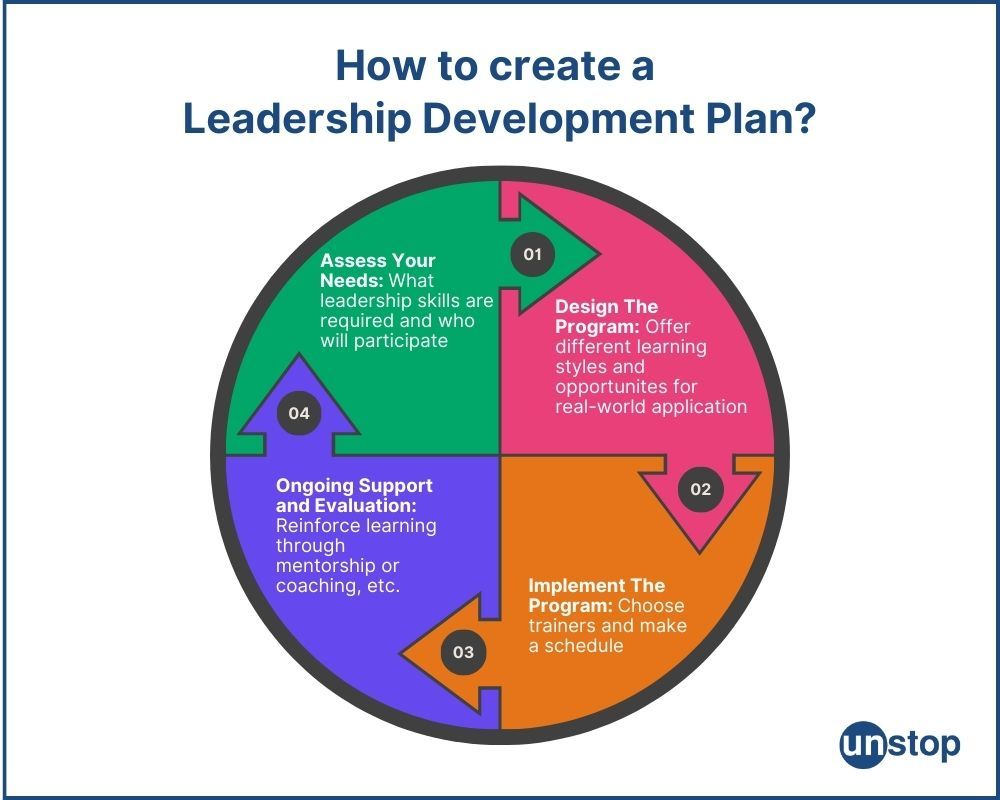
Here's a roadmap to developing a successful leadership development program:
1. Assess Your Needs
- Identify Goals: Define the overall objectives of your program. What leadership skills do you want to cultivate in your employees? How will this program benefit the organization?
- Target Audience: Who will participate in this program? Are they high-potential employees, newly promoted leaders, or experienced leaders needing further development?
- Needs Analysis: Conduct surveys, interviews, or focus groups to understand the specific leadership skills and development areas needed within your target audience.
2. Design Your Program
- Content and Curriculum: Based on your needs analysis, choose the leadership skills you'll focus on. Consider incorporating a blend of topics like communication, strategic thinking, motivation, team building, and emotional intelligence.
- Learning Methods: Offer a variety of learning methods to cater to different learning styles. This can include instructor-led training, e-learning modules, simulations, case studies, mentorship programs, and coaching sessions.
- Action Learning: Integrate opportunities for participants to apply their learning in real-world situations through projects or assignments.
3. Implement Your Program
- Develop Materials: If creating your own content, ensure it's high-quality, engaging, and relevant to your audience.
- Select Trainers: Choose qualified trainers or facilitators with expertise in leadership development and the specific topics covered in your program.
- Logistics and Delivery: Schedule the program, manage logistics, and ensure a smooth delivery experience for participants.
Simulations are a great way to train potential leaders, allowing them a chance to test their knowledge in a safe environment. Find a series of business simulations on Unstop.
4. Ongoing Support and Evaluation
- Mentorship and Coaching: Provide ongoing support through mentorship or coaching programs to reinforce learning and address individual development needs.
- Action Planning: Encourage participants to create personal action plans outlining how they'll apply their learnings back in their roles.
- Feedback and Evaluation: Gather feedback throughout the program and after completion to assess its effectiveness and identify areas for improvement.
Additional Tips
- Alignment with Company Culture: Ensure the leadership development program aligns with your company's culture and values.
- Leadership Commitment: Gain buy-in and support from senior leadership to promote the program's importance within the organization.
- Diversity and Inclusion: Strive for a diverse and inclusive program that caters to different learning styles and backgrounds.
- Technology Integration: Consider using technology platforms for online learning modules, collaboration tools, and feedback mechanisms.
- Long-Term Investment: Leadership development is a continuous process. Plan for ongoing programs and support to sustain leadership growth within your organization.
By following these steps and incorporating best practices, businesses can create leadership development programs that empowers their employees to become effective leaders.
Example of A Leadership Development Plan
Here's an example of a leadership development program for mid-level managers at a growing tech company:
Scenario: A software development company has experienced rapid growth in recent years. Their mid-level managers are talented but haven't had extensive leadership training. The company wants to develop their leadership skills to empower them to effectively manage and motivate their growing teams.
Needs Assessment: The organization conducts surveys and interviews with mid-level managers and senior leadership. They identify key areas for development: communication (especially giving constructive feedback), delegation, conflict resolution, and coaching team members.
Program Design: The organization develops a 6-month leadership development program with a blended learning approach:
- Monthly Workshops: Interactive workshops led by experienced leadership coaches cover topics like communication styles, delegation strategies, navigating conflict, and coaching frameworks.
- E-Learning Modules: Participants complete online modules on topics like emotional intelligence and giving effective feedback before workshops to build foundational knowledge.
- Action Learning Projects: Managers apply their learning by leading real-world projects within their teams. They receive ongoing coaching and feedback from the program facilitators.
- Peer Coaching Groups: Managers participate in small group coaching sessions, sharing challenges and best practices with colleagues in a supportive environment.
Implementation: The organization hires experienced leadership coaches to facilitate the workshops. They partner with the company's learning and development team to develop high-quality e-learning modules. The program is scheduled on weekdays outside of core working hours to minimize disruption.
Ongoing Support: The organization pairs each manager with a senior leader as a mentor who provides ongoing guidance and support throughout the program. Managers also create personal action plans outlining how they'll apply their learnings to their daily work. After the program concludes, the organization conducts surveys and interviews to assess its effectiveness and identify areas for improvement for future iterations.
Expected Outcomes: By the end of the program, mid-level managers are expected to:
- Communicate more effectively with their teams, providing clear direction and constructive feedback.
- Delegate tasks more efficiently, empowering team members and improving overall productivity.
- Navigate conflict situations within their teams more effectively, fostering a positive work environment.
- Coach and develop their team members, helping them reach their full potential.
This is just one example, and specific programs will vary depending on the company's needs and resources. However, it highlights the key elements of a successful leadership development program: identifying needs, designing a comprehensive program, providing ongoing support, and measuring its effectiveness.
Benefits of Leadership Development Training
Employee Retention
Investing in leadership development programs is crucial for improving employee retention. By providing opportunities for growth and advancement, organizations can retain top talent.
Succession Planning
Leadership development helps enhance succession planning by identifying and nurturing high potentials within the company. This promotes internal talent and reduces the need for external hires.
Work Environment
Creating a positive work environment through effective leadership development initiatives can attract and retain top talent. Employees are more likely to stay in an organization that invests in their growth and values their contributions.
In today's competitive landscape, investing in leadership development is crucial. By honing essential skills, fostering growth, and implementing tailored programs, organizations can cultivate strong leaders who drive success.
These leaders not only impact the company's bottom line but also inspire and empower their teams to reach new heights.
Frequently Asked Questions
1. What is the significance of leadership development in organizations?
Leadership development is crucial for nurturing talent, fostering innovation, and driving organizational growth. It helps in creating a pipeline of future leaders and enhancing employee engagement and productivity.
2. How do leadership development programs benefit individuals?
Leadership development programs equip individuals with essential skills like communication, decision-making, and problem-solving, empowering them to lead effectively. These programs also boost confidence and career advancement opportunities.
3. Can you provide examples of leadership development initiatives?
Real-world leadership development initiatives include mentorship programs, workshops on emotional intelligence, team-building exercises, and executive coaching. These initiatives focus on honing leadership skills through practical experiences and continuous learning.
4. Why should individuals consider joining leadership development programs?
Joining leadership development programs offers opportunities for personal growth, skill enhancement, networking with industry professionals, and access to valuable resources. It accelerates career progression by preparing individuals for leadership roles within their organizations.
5. How does developing leadership in organizations impact talent retention?
Developing leadership in organizations enhances employee satisfaction, motivation, and loyalty. When employees see opportunities for growth and advancement within the company through effective leadership development initiatives, they are more likely to stay long-term.
Suggested Reads:
- Learning And Development: Definition, Importance & Latest Strategies
- Compensation Management Essentials: Types, Benefits, Process
- Changing Role Of HR: From Administrative To Strategic
- Difference Between Talent Acquisition And Recruitment: 5 Key Distinctions
- What Is Work Culture? Meaning, Types, And Best Practices
I’m a reader first and a writer second, constantly diving into the world of content. If I’m not writing or reading, I like watching movies and dreaming of a life by the beach.
Login to continue reading
And access exclusive content, personalized recommendations, and career-boosting opportunities.
Subscribe
to our newsletter
Blogs you need to hog!
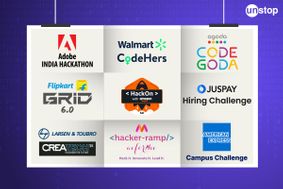
Organize Hackathons: The Ultimate Playbook With Past Case Studies

What is Campus Recruitment? How To Tap The Untapped Talent?
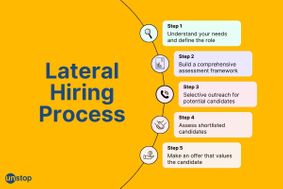
Lateral Hiring: A Complete Guide To The Process, Its Benefits, Challenges & Best Practices
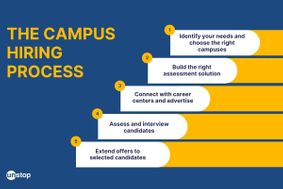












Comments
Add comment